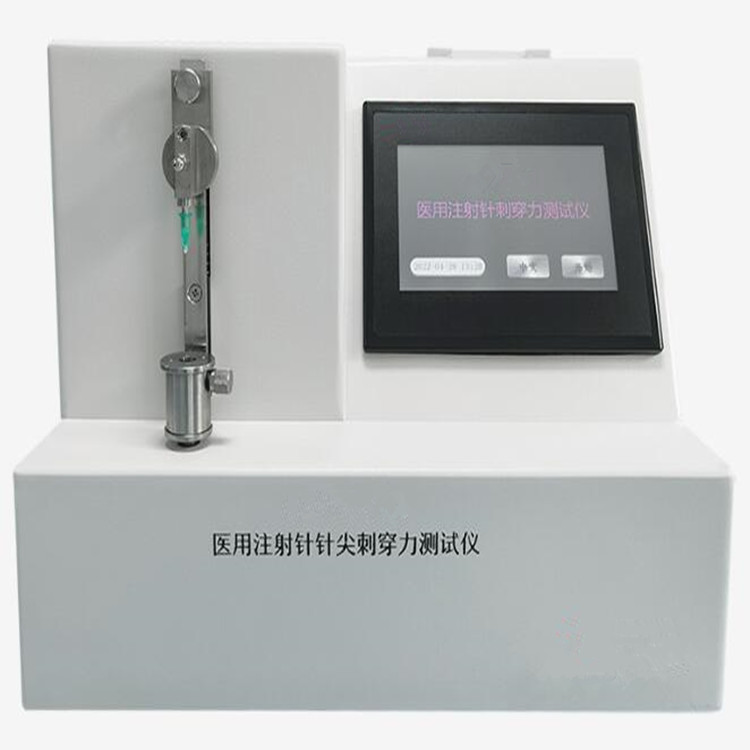Medical injection needle tip puncture force tester
Medical Injection Needle Tip Puncture Force Tester: Comprehensive Overview
This article introduces the medical injection needle tip puncture force tester, a critical device for evaluating needle sharpness and safety in medical devices. It outlines applicable standards, key technical parameters, operating principles, and test methodologies, providing a concise guide for manufacturers and quality control teams.
Applicable Standards
The tester complies with international standards for needle performance evaluation, including:
ISO 11608-2:2020 (Needles for single-use syringes — Part 2: Needles for insulin pens)
GB 15811-2016 (Chinese standard for single-use sterile hypodermic needles)
ASTM F1886-16 (Standard Test Method for Penetration Force of Hypodermic Needles)
Main Parameters
| Parameter | Specification |
|---|---|
| Test Force Range | 0-50N (adjustable) |
| Accuracy | ±0.5% of Full Scale (FS) |
| Resolution | 0.01N |
| Puncture Speed | 5-500mm/min (programmable) |
| Sample Diameter | Φ0.3-2.0mm (customizable) |

Working Principle
The tester integrates a precision load cell, motor-driven actuator, and digital control system. A needle is vertically punctured into a standardized test medium (e.g., parafilm or gelatin) at a controlled speed. The load cell measures real-time force, while sensors track displacement and velocity. Data is processed to generate force-displacement curves and puncture force values.
Test Principle
Sample Preparation: Secure the needle and test medium in alignment.
Parameter Settings: Define puncture speed, target depth, and medium type via touchscreen.
Automated Testing: The actuator drives the needle into the medium; peak force and penetration energy are recorded.
Result Analysis: Compare data against standard thresholds to assess needle sharpness, bending resistance, and lubrication effectiveness.
This tester ensures compliance with regulatory requirements, helping manufacturers optimize needle design for patient comfort and clinical efficacy. Its high precision and customizable features make it indispensable for medical device quality control.

